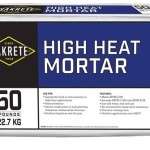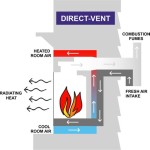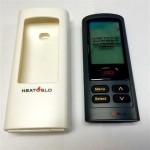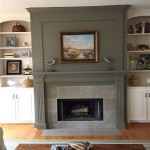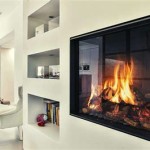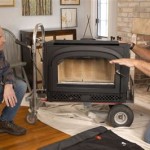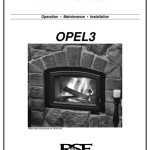```html
Fireplace Cooking Grate: A Comprehensive Guide
A fireplace cooking grate is a fundamental tool for utilizing a fireplace as a functional cooking space. It provides a stable platform for supporting cookware and food directly over the open flames or hot coals, enabling a unique and flavorful cooking experience. The design, materials, and dimensions of the grate significantly influence its performance, durability, and suitability for different cooking applications.
Understanding the different types of fireplace cooking grates, their optimal uses, and the factors to consider when selecting one is essential for anyone interested in exploring the art of fireplace cooking. This article will delve into the specifics of fireplace cooking grates, covering their various types, construction materials, selection criteria, and safety considerations.
Types of Fireplace Cooking Grates
Fireplace cooking grates are not a one-size-fits-all solution. They come in various designs, each tailored to specific cooking styles and fireplace configurations. Recognizing these differences is crucial for choosing the appropriate grate for individual needs.
Flat Grates: These are the most basic type, consisting of a flat, usually rectangular, arrangement of metal bars. They are simple and inexpensive, suitable for direct grilling of smaller items like steaks, sausages, or vegetables. Flat grates are generally positioned close to the fire, allowing for intense heat exposure. However, their lack of adjustability and potential for uneven heat distribution can be limitations.
Tripod Grates: As the name suggests, these grates stand on three legs, providing greater stability and often allowing for height adjustment. Tripod grates suspend the cooking surface above the flames, offering better heat control. They are well-suited for cooking in Dutch ovens or larger pots, as the tripod design can support heavier loads. The adjustable height allows users to regulate the cooking temperature by raising or lowering the grate closer to or further from the heat source.
Swing-Away Grates: These grates are designed with a hinged mechanism that allows them to be swung away from the fire. This feature is particularly useful for adding or removing fuel, adjusting the cooking food, or preventing food from burning. Swing-away grates provide a convenient way to manage the cooking process without needing to remove the entire grate from the fireplace. They often feature a locking mechanism to ensure the grate remains securely in place during cooking.
Adjustable Height Grates: This type of grate includes mechanisms that allow the user to manually adjust the height of the cooking surface above the fire. This can involve threaded posts, ratcheting systems, or other designs that enable precise control over cooking temperature. Adjustable height grates are suitable for a wide range of cooking applications, from slow roasting to searing, by altering the proximity of the food to the heat source.
Rotisserie Grates: While not a grate in the traditional sense, some fireplace cooking setups incorporate rotisserie attachments that suspend food above the fire and slowly rotate it for even cooking. These systems typically involve a motorized mechanism to turn the spit, ensuring consistent heat exposure on all sides of the food. Rotisserie cooking is ideal for roasting whole chickens, roasts, or other large cuts of meat.
Materials Used in Fireplace Cooking Grates
The material used to construct a fireplace cooking grate significantly impacts its durability, heat resistance, and overall performance. Selecting a grate made from a suitable material is vital to ensure longevity and safety.
Cast Iron: Cast iron grates are known for their excellent heat retention and even heat distribution. They can withstand very high temperatures and are ideal for searing and grilling. However, cast iron is susceptible to rust, requiring regular seasoning and maintenance to prevent corrosion. The weight of cast iron can also be a factor, making it less portable than other materials.
Steel: Steel grates are a more common choice due to their balance of durability, heat resistance, and affordability. They are less prone to rust than cast iron, especially if coated with a high-temperature paint or enamel. Steel grates can come in different grades, with thicker steel providing greater strength and longevity. Stainless steel is a particularly good option due to its excellent corrosion resistance, although it is typically more expensive.
Stainless Steel: Stainless steel grates offer the best combination of durability, heat resistance, and corrosion resistance. They are relatively easy to clean and require minimal maintenance. Stainless steel is also a food-safe material, making it a suitable choice for direct contact with food. However, stainless steel grates tend to be more expensive than those made from cast iron or regular steel.
Chrome-Plated Steel: While offering a shiny appearance and some rust resistance, chrome-plated steel grates are generally less durable than other options. The chrome plating can chip or flake over time, especially with exposure to high heat. This can lead to rust and compromise the integrity of the grate. Chrome-plated grates are typically a budget-friendly option, but may not be as long-lasting as other materials.
The choice of material depends on budget, desired lifespan, and the intended use of the grate. For frequent and heavy-duty cooking, stainless steel or heavy-gauge steel are preferred choices. For occasional use, a well-maintained cast iron or coated steel grate may suffice.
Factors to Consider When Selecting a Fireplace Cooking Grate
Choosing the right fireplace cooking grate involves assessing several key factors to ensure it meets individual needs and fireplace specifications. Careful consideration of these factors will result in a grate that is both functional and safe.
Size and Dimensions: The grate must fit comfortably within the fireplace opening, leaving adequate space for airflow and fuel placement. Accurately measuring the fireplace's interior dimensions is crucial. The grate should not be too large, obstructing airflow, nor too small, creating instability. Consider the size of the cooking surface needed based on the types of meals that will be prepared.
Weight Capacity: The grate's weight capacity determines the amount of weight it can safely support. This is particularly important if planning to cook with heavy cookware like Dutch ovens. Exceeding the weight capacity can lead to grate failure, posing a safety hazard. Check the manufacturer's specifications for the maximum weight limit before use.
Stability and Support: A stable grate is essential for safe cooking. Look for grates with sturdy legs or a solid base that prevents tipping or wobbling. Tripod grates generally offer good stability, while flat grates may require additional support depending on their design and the surface they are placed upon. Ensure the grate sits evenly on the fireplace floor.
Heat Distribution: The grate's design and material influence how evenly heat is distributed across the cooking surface. Grates with closely spaced bars tend to provide more even heat distribution than those with wider gaps. Cast iron grates are known for their excellent heat distribution properties. Uneven heat distribution can lead to some areas of the food cooking faster than others.
Ease of Cleaning: Cleaning a fireplace cooking grate can be a challenging task. Look for grates with features that simplify cleaning, such as removable bars or a smooth surface that is easy to scrub. Consider the material's resistance to rust and corrosion, as these factors influence the ease of maintenance over time. Stainless steel grates are generally easier to clean than cast iron grates.
Adjustability: Adjustable height or swing-away features can greatly enhance the cooking experience. These features allow for greater control over cooking temperature and provide convenient access to the fire. Consider whether these features are necessary based on individual cooking preferences and needs.
Safety Features: Evaluate the grate's safety features, such as secure locking mechanisms, sturdy construction, and heat-resistant handles. These features help prevent accidents and ensure safe operation. Never leave a cooking fire unattended.
Intended Use: Consider the primary purpose of the grate. Will it be used for grilling small items, supporting heavy cookware, or roasting large cuts of meat? The intended use will dictate the necessary features, weight capacity, and overall design of the grate.
Selecting the appropriate fireplace cooking grate is a crucial step toward enjoying the unique flavors and experiences of fireplace cooking. By carefully considering the type, material, and key features, one can choose a grate that is safe, durable, and well-suited to individual cooking needs.
```
Cooking At Home Over A Wood Fire Charles Van

Fire Pit Bbq Grilling Grate Grill Grates Walden Backyards

Grate For Outdoor Fireplace Cooking Diy Kitchen Design

Fire Pit Bbq Grilling Grate Grill Grates Walden Backyards

Rome Adjustable Cooking Mpn 130 Barbecue Grates Racks

Stainless Steel Bbq And Fire Pit Grates

42 Handcrafted Cooking Grate

Vevor Campfire Grill Grate Double Layer 3 Section Height Adjustable Fire Pit For Outdoor Open Flame Cooking Skjkdjjxlcxzs3or9v0 The Home Depot

Fire Pit Grill Grate 30 Rough Rigid

Endless Summer Outdoor Firehouse With Chimney Outdoormarketplace
Related Posts

